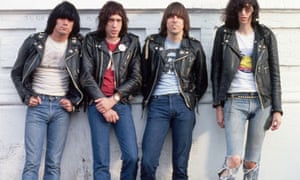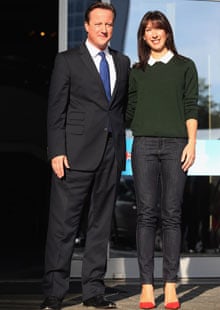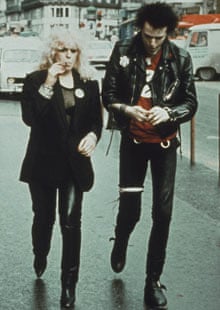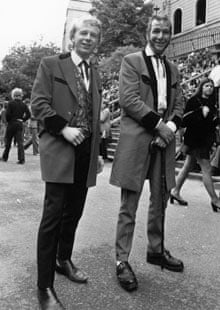Skinny jeans: the fashion trend that refuses to die

Once you start seeing skinny jeans, it's pretty hard to stop. And the more you see of them, the clearer this becomes: the jeans might be narrow, but it's a broad church living in them. Sloanes like them high-waisted, apparently having ironed the legs; emos wear them flatfooted and belted. Hipsters roll the ankles and prefer an imprecise crotch; skaters like them with sneakers and a snapback. You can play this game on almost any street in Britain. If there are people, there will be skinny jeans. They are as much a part of street furniture as lampposts – but narrower.

How did skinny jeans come to hold us in such close grip? For all their bad press about being only for skinny people (admittedly, their name has not helped with this), skinny jeans are in fact benignly elastic and surprisingly democratic, stretching comfortably to include all shapes of bottom and all social groups. They clothe the entire cultural spectrum, up to and including the next queen of England; all kinds of sexy, from Russell Brand to Nigella Lawson; and every musical genre from Lil Wayne through Justin Bieber and Girls Aloud to BBC2's chorister-in-chief, Gareth Malone. (The Lil Wayne end of that spectrum so outraged hiphop artist DMX that last year he gave an interview from prison in which he railed against them as "baby clothes".)They are daytime and night-time, everyday primetime, from Mel and Sue on The Great British Bake Off through Jewish Mums of the Year and Kevin McCloud to Fiona Bruce on Antiques Roadshow.

They have become the first choice for first women, as testified by Samantha Cameron at the Conservative party conference last autumn and Michelle Obama. But they also clothe a good deal of the Occupy movement, not to mention Pussy Riot; there are pictures of Syrian rebels in skinny jeans. In Britain, mums on the school run wear them; so do their children at weekends. There is no lower age limit, just as DMX said: at Gap the smallest size of skinny is 0 months. Things do tail off at the other end of the spectrum, although "tailing off" is probably not how Ronnie Wood, 65, Karl Lagerfeld, 79, and former Conservative MP Teresa Gorman, 81 – all skinny jeans wearers – would see themselves.
"The punk revival has to have been the beginning of it," says Jane Shepherdson, the chief executive of Whistles, which lists https://www.destination-store.net/collections/levis-original-jeans, all of them skinny. "I was a big Clash fan. That's when I wore them the first time around. I remember them getting narrower and narrower and thinking I could hardly get my feet in."

These days Shepherdson owns 15 pairs. Pair number 16, in leather, will be joining them soon. "It is very hard to see us going back to wider jeans. If I could say there would definitely be one thing in the next [Whistles] range, it would be a pair of skinny jeans. I'm sitting in a taxi now," she says, "looking out the window, and the vast majority of people on the Euston Road are wearing them, men and women – all wearing them differently, but all wearing them."
Shepherdson knows a thing or two about skinny jeans: in August 2005, as the brand director of Topshop, she brought them to the British mainstream when she launched the Baxter style. Her tenure coincided with the store's absolute domination of the high street midway through the 2000s: the Baxter averaged weekly sales of 18,000 in its first nine months (although it has since been overtaken by the even narrower Leigh, 1.2m pairs of which were sold in the last financial year).
Shepherdson thinks the punk connection "might explain why skinny jeans are so appealing to the British", but that doesn't really nail their origins this time around. She has a theory that Alexander McQueen's bumsters, first shown in 1996, got us thinking about more interesting trouser shapes, and that an appetite for something different seeped into our consciousness alongside a fatigue with leggings, creating the perfect conditions for skinny jeans to flourish.

There are other theories. "You can trace the skinny fit right back to the mid-18th century and a youth movement called the Macaronis," says Sarah Niblock, a professor at Brunel University who specialises in visual culture. "They were the first British fashion movement to use fashion to be subversive. They used to wear very slim-fit clothes." Niblock thinks you can draw a line from the Macaronis through cowboys, teddy boys and punk to now. "That narrow cut is very much about the outsider, about singling yourself out as somebody different."
"Skinny jeans are such a convenient shorthand for youth and rebellion," agrees Rod Stanley, the former editor of Dazed & Confused magazine. He cites Hedi Slimane, whose slim-silhouetted collection for Dior Homme was shown 10 years ago this month, and who is often credited with the narrowing of our perspective and the fetishisation of skinny trousers. Not least by Slimane himself, who was photographing the scene at clubs such as the Rhythm Factory and the George Tavern in east London around this time, and dressed Pete Doherty when Doherty was with Kate Moss.

But there had been earlier signs of tightening trousers. Earl Jean offered slim straight-legs in 2001. In her autumn/winter 2002 collection, Stella McCartney showed trousers drawn taut by cuffs and zips and stirrups. There were stretchy legs at Versus and slim ones at MaxMara. And in December 2002, Ramones fan Lucy Pinter was filing the paperwork to register her company Superfine. Within months it would be dressing Kate Moss in all those faded grey skinnies. Working as a stylist, Pinter had been desperately trying to narrow her models' trousers: "Literally down on my knees wih the black gaffer, taping the bootlegs into skinnies."
By mid-2003 Vogue was hailing "drainpipes", and The Strokes, synonymous with sharp trousers – though only Nick Valensi was wearing skinny jeans at this point – were the height of New York cool. "Every kind of cultural element was pointing to skinny jeans," says Sarah Harris, a Vogue fashion features writer known for her passion for denim. She says she wears jeans 99% of the time and has 30 pairs "in constant rotation", 20-25 of them skinny. "But even then I am surprised that they've lasted this long."
So why are skinny jeans still going strong? A benchmark product of fast fashion, skinny jeans hit their stride just as the British high street became cool and celebrated. Yet they have actually proved remarkably … slow. How come? Perhaps the answer lies in the place with the greatest density of skinny jeans a square metre.
"You would have to say Camden," says Shepherdson from that cab on Euston Road. "Camden market," says Harris, from the offices of Vogue.

Two middle-aged guys in dapper hats are sitting on a canal towpath, their legs – one pair in red skinny jeans, one in blue – dangling over the edge. Beside them, some cans of beer and a tin of Café Crème tobacco. They seem to be performing the same job as one of those statues of seafarers found at the entrance to harbours: welcome to Camden, skinny jeans capital of the UK. One of them gobs into the water.
The snackers at the nearby food shacks are all in skinnies and the shoppers are too. So now for that game. It's 2.04pm on a Thursday, outside the Cold Steel Body Piercing shop on Camden High Street. In the first minute, 14 pairs of skinny jeans go past. Another 40 pass in both directions over the next three minutes. Then another 44 in two minutes. Over the next four minutes, 72. That's 170 in 10 minutes. If this average were to hold, more than 1,000 pairs would cross this shopfront in an hour.
